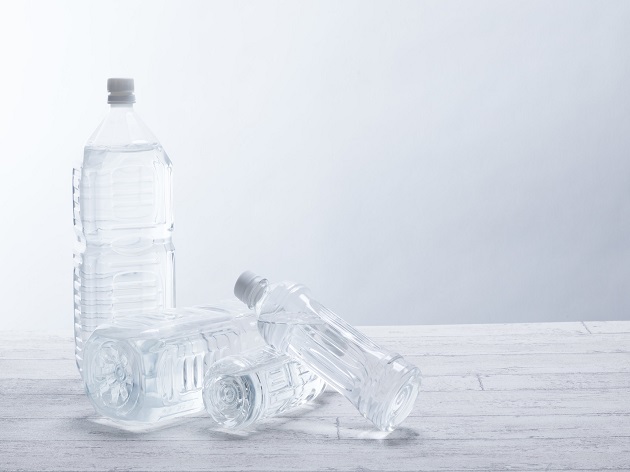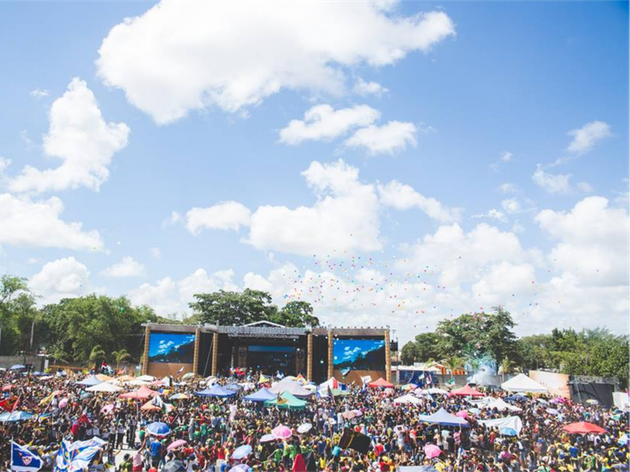英字新聞、ジャパンタイムズは私たち英語を勉強しているものにとってはとてもよい教材となりますが、発行の主目的は日本在住の外国人に主に日本の出来事について新聞記事として伝えていくということです。
連日30℃以上の気温が続いた最中に、「この夏の灼熱地獄を生き延びるには」と題された記事が掲載されていました。どのようにして日本のこの暑い夏を乗り切るかということを伝えていました。ご紹介しましょう。
Q&A:How to survive this year’s scorching summer in Japan
Japan Times July 20, 2018 この夏の灼熱地獄を生き延びるためには(ジャパンタイムズ 2018年7月20日)
– survive:生き残る、生き延びる。
– scorching:猛烈に暑い、焦げるほどに焼きつく
This year's heat wave is again lethal, having already killed over 30 people and sent more than 10,000 to hospitals since July 9 due to heat exhaustion and heatstroke. 7月9日以来、熱中症や熱射病によって30人以上が死亡し、10000人以上が病院へ搬送されている、この夏の熱波はまた殺人的だ。
– lethal:致命的な、殺人的な、死を招く。
– heat exhaustion:熱中症。
– heatstroke:熱射病。
-このセンテンス:分詞構文です。従属節が現在分詞ではじまっています。この分詞によって、接続詞+主語+動詞を表しているのです。このセンテンスの場合は、この夏の殺人的な暑さの結果を記述していますから、and it have をhaving1語にて表しています。そしてこのitは主節の主語this year’s heat waveを指しています。
The extreme weather continued to scorch Japan this week, with many cities seeing their highest-ever recorded temperatures. 今週は、多くの都市で、過去最高の気温を記録し、異常気象が日本を焦げ付かせ続けている。
– extreme weather:異常気象。
– with:このwithの先行詞はJapanです。
The mercury rose to as high as 40.7 degrees in the city of Tajimi in Gifu Prefecture on Wednesday. 水曜日には岐阜県多治見市において水銀柱は40.7℃に達した。
– mercury:水銀柱、水銀温度計。
– as high as ~: ~の高さ。
Unfortunately we will have to continue to deal with this sweltering summer for at least the next week or two, and weather forecasts say the high heat will not go away anytime soon. 残念ながらこのうだるほどの暑さはすくなくとも1、2週間は持続し、高い気温はしばらくはこのままの状態が続くらしい。
– deal with:困難な状況に対応する、この場合は耐え続けるといったニュアンスです。
– sweltering:暑さにうだっている、うだるほどの。
Here is a survival guide for the hot summers in Japan and other heat-related information. 日本の暑い夏を生き延びる方法そしてそのほか暑さ関連の情報をお届けします。
– summers:複数形となっていて、日本の夏は今年に限らず、毎年ひどく暑いのですよということを伝えています。
What can I do to prevent heat-related illnesses?
熱中症予防のためにできること
– heat-related illnesses:この表現も熱中症です。
The number one countermeasure is to avoid sudden exposure to extremely high temperatures. 一番の対策はこのひどい暑さに身をさらさないこと。
– countermeasure:対応策。
– exposure:露出する、さらす。
According to the Environment Ministry, heat-related illnesses are caused by the failure of bodily functions meant to have a cooling effect because of reduced sweating and blood flow. 環境省によれば、熱中症は発汗作用や血流の低減により身体を冷やす機能が落ちてしまうことによるとのことです。
– the Environment Ministry:環境省。
– bodily function:身体内の組織的作用。
The early signs of heat-related illness include dizziness, a flushed face, aching and cramping muscles, and nausea. めまい、顔が赤くなる、筋肉が痛む、痙攣する、そして吐き気がする、といった症状は熱中症の初期症状です。
– dizziness:めまい。
– aching:痛み。
– cramping:痙攣。
– nausea:吐き気。
The disease can lead to even more serious symptoms such as disorientation and coma. さらに方向感覚がなくなるそしてこん睡状態に陥るといった症状になることもあります。
– symptoms:症状。
– disorientation:方向感覚麻痺。
– coma:昏睡。
The ministry recommends wearing light, cool clothes and staying in the shade when going outside. 環境省は外出の際は軽く涼しい服装で日陰にいるようにと呼びかけています。 It also urges people to keep hydrated by drinking plenty of water and consuming sodium. また水分や塩分を十分に取ることも重要であるとしています。
– urge:促す、強調する、主張する。
– hydrated:水分が十分な状態。
– sodium:ナトリウム、塩分。
In case of dehydration, oral rehydration therapy or treatments consisting of a solution based on salt and sugar taken orally can be useful as an emergency cure. 脱水症状になった場合は、塩分、糖分を含んだ溶液による経口補水が応急処置としては有益です。
– dehydration:脱水症状。
– oral rehydration therapy:経口補水療法。
– solution:溶液。
– このセンテンス:主語が長くすこしわかりづらいです。主語の部分を直訳しますと、「経口摂取できる塩や砂糖を含んだ溶液よりなる経口補水液療法、治療」となります。
If such a solution cannot be found at a convenience store, it can be made at home from a liter of clean water, six teaspoons of sugar and a half teaspoon of salt, according to the Japan Committee for UNICEF. 日本ユニセフ協会によれば、もしコンビニで見つけられなければ、自宅で、水1リットルにスプーン6杯の砂糖、スプーン半分の塩を溶かすことで経口補水液となるそうです。 Drinking cold barley tea, a popular summer flavor in Japan, is also believed to be effective for rehydration because it helps to top up minerals lost in sweat, according to the weather forecasting website tenki.jp, which is run by the Japan Weather Association. 日本気象協会のウェブサイトには、日本の夏の飲物である冷たい麦茶も経口補水に効果があるとされています。汗で失われたミネラルを補給してくれるからです。
– barley:大麦。日本語ではおおざっぱに麦と表現することが多いのですが、英語では、小麦wheatと大麦barleyはしっかりと区別する必要があります。
– rehydration:再水和、水分補給。
– top up:補給する。
How can I learn about the risks of heat-related illnesses?
熱射病の危険についてどうやって知っておくか
The Environment Ministry's website for heat-related illness prevention (http://www.wbgt.env.go.jp/en/) shows an hourly updated heat stress index by region. 環境省のHPでは熱射病予防のために一時間毎に地域別の暑さ指数が更新されています。
– heat stress index:暑さ指数。
The heat stress level is measured by the Wet Bulb Globe Temperature index, which indicates the risk of heat-related maladies based on factors such as temperature, humidity, wind and infrared radiation. A WBGT above 28 degrees significantly increases the risk of exhaustion or heatstroke. 暑さ指数はWBGT指標によって測定される。それは気温、湿度、風速、赤外放射などの要因をもとにした熱射病の危険を示すものです。WBGT指標が28を上回ると、熱中症や熱射病の危険が非常に増大します。
– the Wet Bulb Globe Temperature index:WBGT指標、湿球黒球温度。
– maladies:病気、疾病。
– infrared radiation:赤外線、赤外放射。
– significantly:重大に。
The WBGT index in Tokyo at 2 p.m. Friday was 32.5 degrees, a level at which any kind of exercise should be prohibited. 金曜日の東京の午後2時、WBGT指標は32.5度、野外活動は一切禁止されるべきレベルでした。
When will this extreme heat go away?
異常な高温はいつまで?
Weather forecasts say the scorching heat will continue for at least the remainder of this month. 気象予報ではこの灼熱の気温は少なくとも今月はこのままだとのことだ。
– remainder:残る、残存。
The Japan Meteorological Agency forecasts that temperatures everywhere in Japan except for Okinawa Prefecture and the Amami islands in Kagoshima Prefecture will continue to be higher than usual until the beginning of August. 気象庁は沖縄、奄美を除く全国の気温は8月はじめまでは平年を上回ると予報している。 The agency forecasts that the heat will ease to the level of a usual summer, or a little higher, from Aug. 4 to 17. 気象庁はまた8月4日から17日にはこの高温は平年並みかわずかに高いくらいにまでやわらぐと予報している。 But Weathernews Inc. predicts the extreme weather will return in late August to early September, due to the arrival of two anticyclones - the Pacific and the Tibetan - over Japan's main island. しかしウエザーニュース社は異常気象は8月終わりから9月はじめまでには再びあらわれるとしている。その頃に日本の上空に太平洋とチベットの二つの高気圧が張り出してくるので。
– predict:予言する、予報する。
– anticyclone:高気圧。
What else should I know about this year’s hot summer?
この夏の暑さについて他に知っておくべきことは
According to Weathernews, the seven-day moving average lowest temperature in Tokyo in August has risen by 2.7 degrees since a century ago, while the moving average highest temperature during the month has also increased by 1.5 degrees. ウエザーニュース社によれば、8月の東京の7日毎の移動平均最低気温は1世紀前よりも2.7度上昇している。一方移動平均最高気温も1.5度上昇している。 The Chiba-based weather information company says the rising temperature can be attributed to the heat island effect, in which the temperature in urban areas covered with concrete increases due to a lack of cooling provided by trees and plants, as well as heat released by human activities and machines. 千葉市にある気象予報専門の同社によれば、気温の上昇はヒートアイランド効果によるものだとされている。その効果によって、樹木による冷却効果がなく、コンクリートに覆われている都市部の気温は上昇する。人間や機械によって生み出されている熱も同様の効果を持っている。
– attribute: ~に帰する、~によるもの。
Meanwhile, increased usage of air conditioners on Wednesday forced Kansai Electric Power Co. to buy 1 million kilowatts of electricity from other domestic power companies to meet the high demand seen in the region from 4 p.m. to 5 p.m. 他方、エアコン使用が増えているが、水曜日には、関西電力は他社から百万キロワットの電力購入を余儀なくされた。午後4時から5時の高い電力需要に対応するために。 The unusual heat has also hit popular summer high school baseball tournaments across the nation. 異常な高温は全国で行われている夏の高校野球大会にも影響している。 On Thursday, 34 teenagers in Kumamoto Prefecture, mostly high school students who were cheering for their schools at a baseball stadium, were sent to hospital after complaining of symptoms of heat exhaustion. 木曜日には、熊本県で、34人の十代の子供たちが熱中症の疑いで病院へ搬送された。ほとんどが球場で母校を応援していた高校生だった。
まとめ
仕事、留学、あるいは観光で、日本のこの夏を経験した外国人は、日本は大変なところだなと思ったに違いありません。日本に住む私たちにとっても、初めて経験する暑い夏でしたから、本当に大変だったでしょうね。
今年の冬はひどく寒くて、そして春には桜がとても早く満開になり、また梅雨はあっという間に終わって、灼熱の夏となりました。穏やかな秋となりますことを祈りたいです。
![EnglistA [イングリスタ]](https://www.english360.jp/mgp2/wp-content/uploads/2015/09/site-title.gif)


